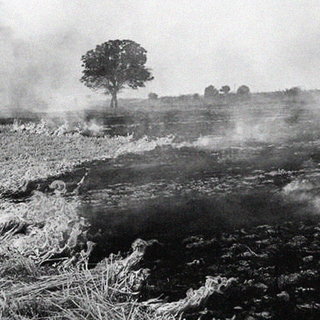The workday (and life) elixir that is coffee is grown across over 50 countries. As these regions experience extreme weather, including increased temperature, the quality and taste of coffee are likely to deteriorate, according to a new analysis.
Researchers reviewed 73 studies to explore different environmental factors spurred by climate change and how they impact coffee quality. Published in Frontiers in Plant Science this month, their analysis found that factors such as water scarcity, increased temperature, and higher carbon dioxide will impact coffee production and quality. Farms at higher altitudes had better coffee flavor and aroma but on the other hand, too much light exposure on farms on a lower elevation diminished the coffee quality. This is because as temperature rises, coffee ripens more quickly, impacting its quality.
In other words, your favorite dark roast coffee dulling in flavor over time is a direct result of how these crops are grown. “Increased temperature and an increase in carbon dioxide concentration can make coffee taste worse, and both will be consequences of our fossil-fueled energy production,” Earth.com noted.
This is in line with a raft of studies linking climate change with coffee production. By 2050, about half of the land used to produce high-quality coffee could be unproductive due to climate change, according to researchers. Other concerns also include large swaths of insects that pollinate coffee plants are at risk due to rising temperatures and droughts. A 2016 study also found Nicaragua’s arabica coffee is vulnerable to losing its distinct flavors due to unsuitable climate conditions. As regional suitability falls, acidity decreases, along with other characteristics such as aroma, aftertaste, fragrance, and sweetness.
“Climate change is going to play a bigger role in affecting the quality and integrity of coffee,” author Howard Schultz told Time.
Related on The Swaddle:
Is Coffee Good for You? Here Is What (a Lot of) Research Says
The findings are a stark reminder of the immediacy and severity of climate change. “A subpar cup of coffee has economic implications as well as sensory. Factors that influence coffee production have great impacts on buyers’ interest, the price of coffee, and ultimately the livelihoods of the farmers who grow it,” said Sean Cash, an economist and senior author on the study.
The agricultural challenges that may disrupt production and livelihoods are plenty. Scientists found some mitigation policies — such as controlling exposure to light, pest management, selection of climate-resilient plants — have shown promise. They urge for more “innovative” solutions that allow for good quality growth at different elevation levels.
Recently, scientists found a rare wild coffee plant that can grow in warming climates. To find a wild coffee that tastes great and is heat and drought tolerant is “the holy grail of coffee breeding,” Dr. Aaron Davis, head of coffee research at the Royal Botanic Gardens, Kew, told BBC.
I’m nursing a cup of coffee as I mull over its future. Coffee is linked to consumers, environmental factors, farmers, and other subsidiaries whose livelihood is deeply tied to its production.
“Climate change impacts on crops are already causing economic and political disruption in many parts of the world. If we can understand the science of these changes, we might help farmers and other stakeholders better manage coffee production in the face of this and future challenges,” Cash noted.




